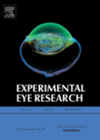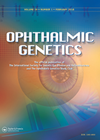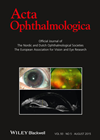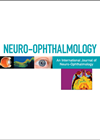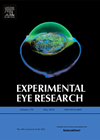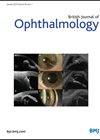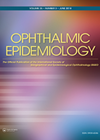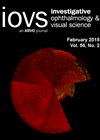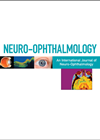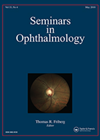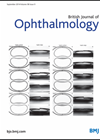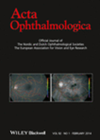
Journal Reviews
Carbonic anhydrase II autoantibody specificity in retinopathy
Autoimmune retinopathy (AR) can be divided into three different categories, paraneoplastic retinopathy, including recoverin-associated retinopathy and melanoma-associated retinopathy, non-paraneoplastic autoimmune retinopathy, combined paraneoplastic optic neuropathy and retinopathy (CAR). These conditions are characterised by circulating anti-retinal autoantibodies, possibly due to a...
Hereditary profile of retinal detachment
This review sought to clarify some of the heritable elements of rhegmatogenous retinal detachment (RRD). The familial element of RRD is well established, with the sibling recurrence risk ratio being 2.1 (Mitry and colleagues), and the parent-offspring recurrence risk ratio...
The rarebit vision test for macular conditions
Rarebit testing is used to measure low degrees of neuro-visual damage and is available for free on the internet. It consists of a fixed bright light dot presented on a black background. During testing it is presented briefly at different...
A case series of acquired esotropia in cerebellar disease
Acquired esotropia in cerebellar disease is well described but under-recognised. The pathogenesis of cerebellar esotropia is controversial. It is suggested it may be a result of disruption to central vestibular pathways. This article reports a case series of seven adults...
Transfected RPE cells inhibit AMD in rats
Age-related macular degeneration (AMD) is a leading cause of blindness in the elderly. Wet AMD is characterised by choroidal neovascularisation, new vessels into the retina, leading to leakage and tissue damage. Many proangiogenic factors particularly vascular endothelial growth factor (VEGF)...
Efficacy and safety of intravitreal aflibercept injection in wet age-related macular degeneration
This is a sub-group study of double masked review of patients randomised to different dosages and treatment frequency compared between aflibercept and ranibizumab treatment. This is to evaluate the efficacy and safety of intravitreal aflibercept (IVT-AFL) in Japanese patients with...
Is an increased homocysteine level associated with greater risk of AMD?
Basic research studies have implicated homocysteine in causing vascular endothelial dysfunction and inflammation, and this has been borne out in large observational studies which suggested that elevated homocysteine is associated with increased risk of cardiovascular disease. In order to determine...
Brn3b neuroprotective effect in rat glaucoma model
An adeno-associated virus-directed overexpression of the Brn3b protein in hypothesised to confer neuroprotective effects in this paper. This is ultimately tested in a well-accepted rat glaucoma model (Morrison’s model: saline injection into episcleral veins of rat eyes with a force...
Abducens nerve palsy following surgical correction of craniosynostosis
The authors present two cases of unilateral abducens palsy secondary to a recent trans-sutural distraction osteogenesis (TSuDO) operation for craniosynostosis. The basic principle of the TSuDO procedure is described as dissection and distraction of the prematurely fused sutures. This complication...
Intravitreal injection related endophthalmitis
This article reviews the incidence, clinical findings, risk factors, management and visual outcomes in intravitreal injection related endophthalmitis. Incidence of this complication is reported to be in the range of 0.038% to 0.065% (1 in 2000-3000 injections). Patients present typically...
Injection frequency and anatomic outcomes following conversion to Aflibercept in neovascular AMD patients
This is a retrospective study of patients with neovascular age-related macular degeneration (AMD) treated with intravitreal Lucentis and / or Avastin who were switched to aflibercept (Eylea). This study was carried out by the Casey Eye Institute retinal clinics, between...
Exudative age-related macular degeneration
The authors looked at macular lesions in eyes with newly diagnosed exudative age-related macular degeneration. The eyes of 23 patients were included and tested for visual acuity, contrast sensitivity, microperimetry, optical coherence tomography (OCT) and fluorescein and indocyanine green angiography....

